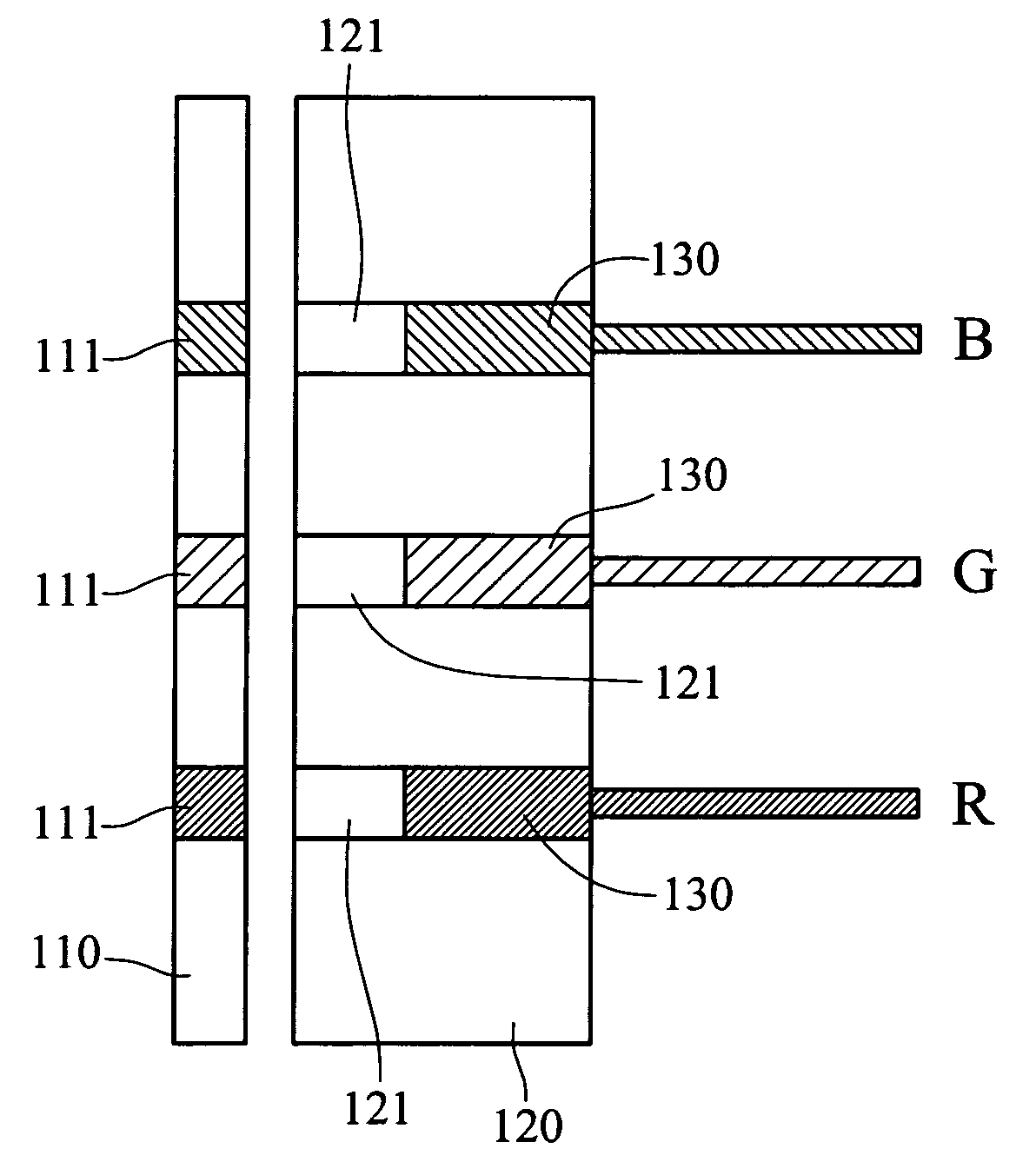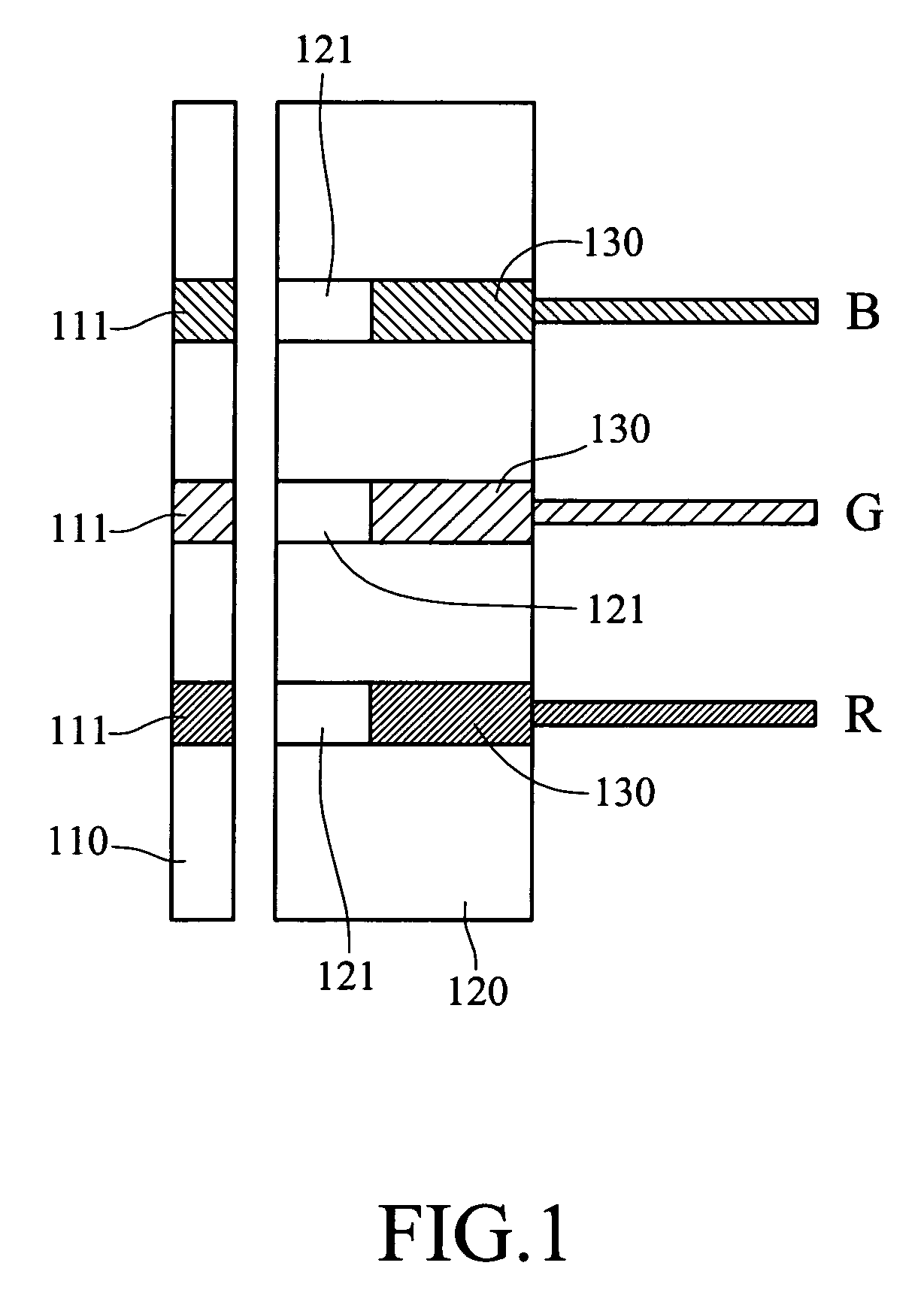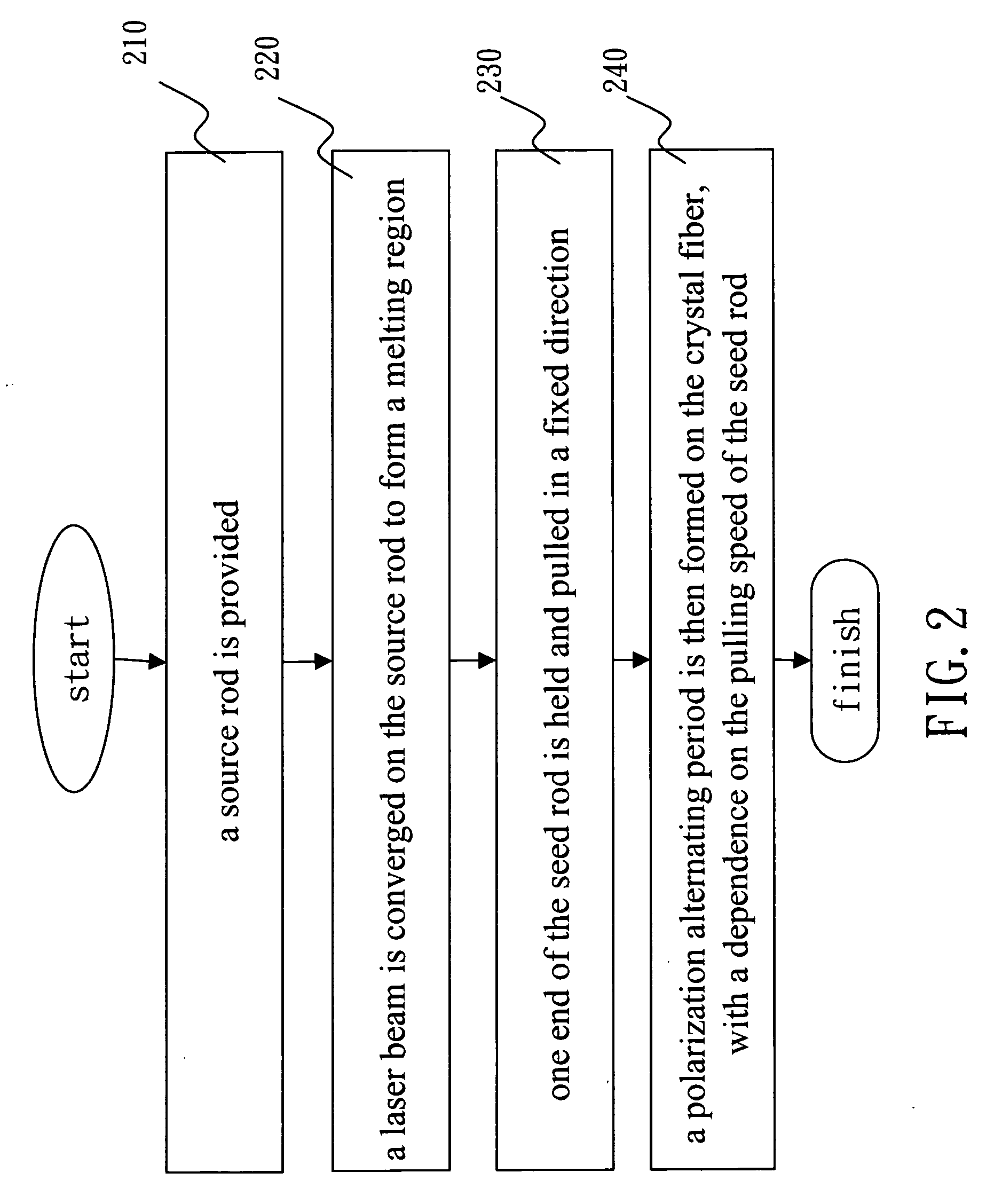Micro crystal fiber lasers and method of making frequency-doubling crystal fibers
- Summary
- Abstract
- Description
- Claims
- Application Information
AI Technical Summary
Benefits of technology
Problems solved by technology
Method used
Image
Examples
Embodiment Construction
[0013] The disclosed micro crystal fiber laser can be used to make lasers in red, green, and blue colors. The lasers of different colors can be combined into an array to provide a full-color laser. As shown in FIG. 1, the micro crystal fiber laser array according to an embodiment of the invention includes a semiconductor laser array 110, three gain crystal fibers 121, and three frequency-doubling crystal fibers 130. The semiconductor laser array 110 consists of three semiconductor lasers 111 to provide stimulated light. The gain crystal fibers 121 are aligned with and coupled to the frequency-doubling crystal fibers 130 and are installed on a fixing base 120. Each of the gain crystal fibers 121 is used to receive the stimulated light and generate base-frequency light. Each of the frequency-doubling crystal fibers 130 has a polarization alternating period. The frequency-doubling crystal fibers 130 are respectively coupled to the gain crystal fibers 121. Different polarization alterna...
PUM
 Login to View More
Login to View More Abstract
Description
Claims
Application Information
 Login to View More
Login to View More - R&D
- Intellectual Property
- Life Sciences
- Materials
- Tech Scout
- Unparalleled Data Quality
- Higher Quality Content
- 60% Fewer Hallucinations
Browse by: Latest US Patents, China's latest patents, Technical Efficacy Thesaurus, Application Domain, Technology Topic, Popular Technical Reports.
© 2025 PatSnap. All rights reserved.Legal|Privacy policy|Modern Slavery Act Transparency Statement|Sitemap|About US| Contact US: help@patsnap.com



